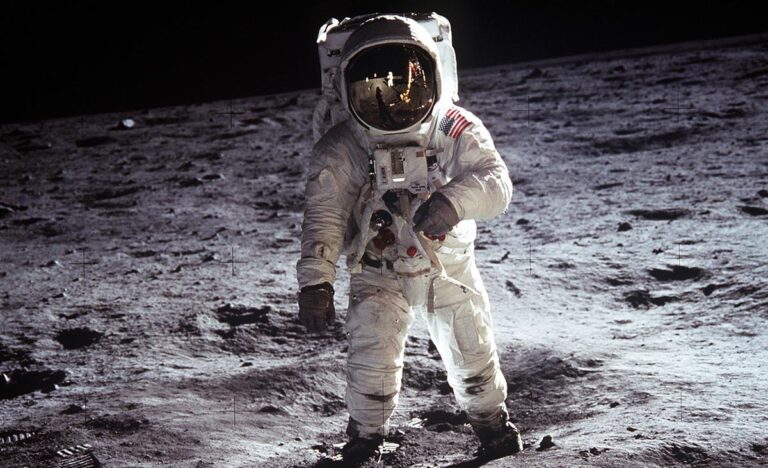First the metaverse, now the universe: Meta and the Smithsonian let you walk on the moon
From 4 May 2022, members of the public will be able to follow in the footsteps of world-renowned astronaut Neil Armstrong and co. and walk the surface of the moon—in VR, that is. The ‘Moonwalk’ exhibit comes as Meta teams up with the Smithsonian Institution—the world’s largest museum, education and research complex—as part of its FUTURES ‘festival’, which will include “immersive site-specific art installations, interactives, working experiments, inventions, speculative designs, and artefacts of the future.”
This partnership is also part of Meta’s ‘Immersive Learning’ initiative in which it is investing $150 million “to help develop the next generation of metaverse creators [and] fund high quality immersive experiences that transform the way we learn.” But what does the exhibit include, and how does it work? Here’s all you need to know.
Timed with the 50th anniversary of the legendary Apollo missions, participants will immerse themselves by donning a Meta Quest 2 headset to take a, let’s say more affordable, trip into space with a chance to actually ‘walk’ on the moon’s surface. But that’s not all. Witnessing the lunar buggy, the horizon stretching out in front of them, the rover exploring extraterrestrial terrain and even being able to kick up moon dust will all be part of the immersion. “It has literally never been possible, unless you were an astronaut, to experience the moon this way,” said Rachel Goslins, director of the Arts + Industries Building (AIB) where the exhibition is being held.
Using cutting edge technology known as photogrammetry—a special way of extracting 3D information from 2D images—over 7,000 archival images from NASA have been stitched together to create this extraordinary experience. Combined with audio recordings from Apollo landings and an incredibly detailed 3D scan of the Apollo 11 spaceflight’s command module, visitors will feel as if they are real astronauts on a lunar mission. Yep, all those childhood dreams of being a cosmonaut are about to become reality—well, virtual reality.
This isn’t the first time the AIB has held exhibitions in relation to the Apollo missions either. In 1969, just weeks after the first moon landing, the institution displayed a rock from the surface of the natural satellite for all to see, which must have been utterly mind-blowing for those at the time. Now, 53 years later we will finally be able to see what all the hubbub was about (and perhaps even why all the billionaires are star-obsessed).
Thanks to Meta’s technology and new initiative, this kind of experience may become more and more frequent, perhaps even entering the classrooms of the future. This new way of visual learning is sure to expand the horizons of how future generations are taught and is an extremely exciting prospect on all accounts.





